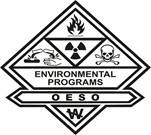Hazardous Waste Reduction at Duke University and Duke Health

Waste Reduction at Duke University and Duke Health
The Environmental Programs Division of OESO is continually working to remove the amount of actual regulated hazardous waste generated at Duke by incorporating Recycling/Reuse and Source Reduction programs into our comprehensive Waste Management strategy. The goal being to minimize the amount of waste that goes into the environment. The above numbers reflect our efforts through collection and recycling of specific waste materials for 2022. It is important that every member of the Duke University community be aware of the environmental and financial impacts related to the disposal of hazardous wastes and materials and to help reduce the volumes that are generated. Waste comes from research and clinical laboratories, Duke Hospital, clinics, and support facilities and is generated as a result of routine activities, single time experiments, unused but no longer needed reagent chemicals, poor purchasing practices and/or lack of appropriate inventory control. Proper waste management needs to be considered as an integral part of operating procedures and everyone at Duke can do their part to reduce, recycle, and reuse when and where they can.
2022 Statistics:
- Amount of Acid and Base Neutralized onsite for safe drain disposal – 12,661-lbs.
- Amount of Oil collected and recycled – 4,575-lbs.
- Amount of Lead collected and recycled – 1,273-lbs.
- Amount of Rechargeable Batteries collected and recycled – 18,903-lbs.
- Amount of Non-PCB and Electronic Light Ballasts collected and recycled – 1,620-lbs.
- Amount of PCB Light Ballasts collected and recycled – 1,533-lbs.
- Amount of Mercury containing devices collected and recycled – 22-lbs.
- Amount of E-waste (circuit board waste) collected and recycled – 102-lbs.
- Amount of Aerosol can waste collected and recycled – 762-lbs.
- Amount of Non-Halogenated Solvent waste collected and fuel blended – 65,633-lbs.
- Amount of Self-Disposal waste collected and disposed of – 17,515-lbs.
- Number of Light Bulbs containing Mercury collected and recycled – (647,726 light bulbs since 2003) (Averaging about 34,000 lamps/year)
OESO – Environmental Programs Division
Hazardous Waste Management


